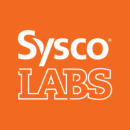The late Clay Christensen, Harvard Business professor and authority on disruptive innovation, estimated that of the nearly 30,000 new consumer products launched every year, a staggering 80 percent fail to meet or exceed expectations. All of those costs that go into product development — research, prototyping, production, marketing — can add up to major losses when a launch fails.
One of the most common reasons for failed product launches is not understanding what customers want. Fortunately, this challenge can be easily overcome, resulting in more beneficial outcomes for both businesses and customers. The key is to listen to the voice of the customer, and take it seriously.
“Having direct, honest and one-on-one conversations with our customers is central to our ability to understand their needs and how we can exceed their expectations,” Justin Hoyman, director of product at FloSports, said. “It also ensures we’re spending valuable engineering resources building and maintaining the right experiences for our customers.”
There’s a multitude of tools companies can use to gather this data, like video calls, surveys or a simple one-on-one conversation. To better understand how innovative companies are capturing — and leveraging — the voice of the customer, we went behind the scenes with six Austin companies to learn their process for listening to customers, incorporating their feedback and ultimately creating customer-centric cultures.
Literati, an Austin-based literature technology company, is poised to capitalize on the extra time many former commuters now have back. The company started in 2017 as a “try-before-you-buy” monthly subscription service for children’s books, but has since expanded to books for all ages. The latest addition to their platform is a virtual book club where members can interact with one another as well as luminaries like Malala, Stephen Curry and Richard Branson.
But the virtual book club isn’t the only way Literati engages with customers. Group Product Manager Omri Buzi said that customer interviews uncover important information that tech channels cannot.
Where is the best place for your company to gather the feedback needed to capture the voice of the customer?
Understanding how our users engage with our product is the most important part of my job. My longtime preferred method for gathering this customer feedback is customer interviews. First, creating a safe and open environment for a customer (current or prospective) allows you to uncover information that most other feedback channels, especially tech-enabled ones, never could. Conversations allow you to reveal a level of nuance (e.g. tone, emotion, non-verbal behaviors) that most other channels miss.
Second, customer interviews are flexible. Did an engineer bring up an interesting idea in standup that morning? Ask your customer what they think about it in an interview later that afternoon. Held up on developing a feature because you’re in an internal deadlock on a critical aspect? Ask the question in your next 10 customer interviews and let them decide. The answers you’re looking for aren’t in the building. Speaking with a customer is an opportunity to speak with someone familiar with your product and who can lend a fresh perspective.
How do you synthesize this data in order to capture deeper insights into your customers’ behaviors and preferences?
Customer interviews are a qualitative tool. They are only as useful as your ability to properly gauge the pervasiveness of what you’ve learned. Without this step, you run the risk of overfitting your product to create a Franken-product that no one wants.
Two of the most common ways that our customer interviews lead to deeper insights are through the development of surveys and hypothesis-building. Speaking regularly with customers ensures that we have effectively captured that voice, making us more effective in our efforts to uncover broader themes with our customers through surveys.
How do you leverage VoC to improve the different stages of the customer journey or to inform your product/marketing/CS strategies?
For every decision made at Literati, we use data. And customer interviews can serve as the tip of the spear for effectively leveraging data.
A great example of this is our book curation. There is a tremendous amount that goes into choosing the books we share with our community of users. The process includes all types of datasets, but the one that leads many of the others is the work we do with our reader test groups. We interview users after they’ve read prospective curation titles, which enables us to uncover themes and aspects of a book our curation team might never have discovered. Bringing this feedback into our curation system broadens our ability to capture signals as we face the challenge of predicting book preferences that are both constantly changing and driven by a desire for diversity and uniqueness.
The COVID-19 pandemic has prevented most of us from attending our favorite sporting events. That’s where a company like FloSports comes in. The digital sports media company offers its customers live and on-demand access to hundreds of thousands of competition events across more than 25 vertical sport categories in the U.S. and abroad. And these aren’t just your average sporting events. FloSports recently extended its partnership with Drum Corps International, a prestigious marching arts organization, and earlier this summer, partnered with the streaming leader for drag racing.
Constantly communicating with its customers to learn their wants and needs is crucial, Justin Hoyman, director of product at FloSports, explained. “It helps us remove internal bias, learn about our product and gain empathy for our customers,” he said.
Where is the best place for your company to gather the feedback needed to capture the voice of the customer?
Having direct, honest and one-on-one conversations with our customers is central to our ability to understand their needs and how we can exceed their expectations. We have a formal process where we reach out to customers to get on video calls to discuss pain points and try out design prototypes meant to address problem areas.
This is essential to our product development cycle because it helps us remove internal bias, learn about our product and gain empathy for our customers. It also ensures we’re spending valuable engineering resources building and maintaining the right experiences for our customers.
How do you synthesize this data in order to capture deeper insights into your customers' behaviors and preferences?
We use a software called Lookback that allows us to have video calls with customers and present interactive prototypes. A moderator and a notetaker are assigned to the interview, and the rest of the team and key stakeholders are invited to observe live. The moderator creates a script to have the customer perform specific tasks. We record our sessions and annotate the video timestamps with key observations in Lookback. We then break down highlights into bite-size bits of information in Confluence where stakeholders can easily digest patterns from our testing.
The tools we use to achieve these results are a combination of Calendly for scheduling, Lookback for video calls, Marvel for interactive design prototypes, Iterable for recruiting, Confluence for data synthesization and our merch store to compensate people for their time.
How do you leverage VoC to improve the different stages of the customer journey or to inform your product/marketing/CS strategies?
From our discussions with customers, we’ve learned that spoilers are a major pain point in sports. It’s really difficult to avoid seeing the outcome of live events for folks that are watching sports on demand. Our content, marketing and product teams have created policies around spoilers that avoid showing the winner in photos, or specifics in headlines. Our website and apps are designed to ensure a direct path to replays that don’t include spoiler information.
Square Root is all about turning data into action. The software tech company built CoEFFICIENT, an intelligent software for automotive original equipment manufacturers, which provides its customers insights to act on their data. That’s why it’s no surprise that the Austin-based company has its own vast supply of data on how to best capture the voice of its customers. Square Root uses Heap Analytics for quantitative data, and tactics like ride-alongs or onsite observation for qualitative data, said Taylor Coppock, a product manager.
Where is the best place for your company to gather the feedback needed to capture the voice of the customer?
The best feedback occurs in natural environments where we get to fully understand the customer’s situation. We do this in a number of ways. We capture the voice of the customer via ride-alongs, where the district managers visit and chat with dealerships, and we attend their corporate regional office meetings. Of course, both have changed due to the pandemic as we adjust to virtual opportunities.
Observing their natural environment leads to unbiased opinions. I’ve sat on the sales floor in a dealership watching a customer walk through our software, and this interaction isn’t something you can misinterpret. I’m scribbling down notes as I see opportunities to improve page navigation. This environment helps us understand exactly where they are in their journey.
How do you synthesize this data in order to capture deeper insights into your customers' behaviors and preferences?
We use Heap Analytics for quantitative data to provide guidance as we make product decisions. This tool helps us find usage patterns and confirm certain actions among the journey. But we can’t look at this data alone to make decisions. In line with one of our company values, “be customer inspired,” we rely heavily on customer context to evolve our product.
Our customer success team has decades of automotive experience and knows how to unpeel the industry wrapper from customer feedback. By speaking the same language, we are more equipped to deeply understand our customers’ unique situation, values and goals.
How do you leverage VoC to improve the different stages of the customer journey or to inform your product/marketing/CS strategies?
When our marketing team coordinated poker nights and happy hours with automotive leaders, we were able to build brand awareness while learning both current and soon-to-be challenges in the automotive industry. This led us to assemble our retail plan manager, a suite of collaborative, goal-tracking tools for district managers to keep dealerships on track even when life throws curveballs. Think of this like a product roadmap but for dealers and automotive brands, ensuring that plans and goals are broken down into achievable targets, even if the entire year changes. Product and engineering mocked up an early workflow of this product, and hopped on calls with district managers to play it out against their actual 2020 process. We quickly learned the collaboration that happens in the field wasn’t fully represented, so we took this feedback and expanded the workflow.
Trust is a key component at Rapid7. The cybersecurity software company helps its clients reduce risk, who trust it to manage any vulnerabilities, monitor malicious behavior and investigate and shut down any cyberattacks. That’s why at Rapid7, it’s no surprise that trust plays an integral role in capturing its customers’ voice, which is done through candid conversations and listening, Annissa Peterson, a senior customer success manager, explained.
Where is the best place for your company to gather the feedback needed to capture the voice of the customer?
The best place for feedback is in candid conversations with customers. Although Rapid7 has wonderful survey mechanisms such as NPS, the heart of actionable and valuable feedback happens in conversations with our customers. As we build trust and rapport, our customers share their goals and business objectives and explain how our products enable them to accomplish these goals, or where we have great opportunities to build additional features based on customer use cases.
In order for our customers to be willing to take the time and energy to share their ideas and needs, we have to ensure we are clearly documenting the use cases, submitting them internally and then updating the customer as progress or features are made. As with any software product, we aim to meet the needs of all of our customers, but sometimes that is not possible and we have to be willing to give transparent feedback on those requests as well.
How do you synthesize this data in order to capture deeper insights into your customers’ behaviors and preferences?
From pre-sales, to deployment, to ongoing enablement and support, we listen to our customers’ needs. These needs are documented in Jira. Rapid7 product management uses these requests to guide the road map, especially when several of our customers have requested the same functionality.
We also have the Rapid7 Voice program, which encourages customers to become an extension of our team as advocates and participants in early access programs. We have a customer experience team designed to fully understand our customers’ journey. They gather unbiased customer feedback via surveys or research interviews and then send that information directly to product management to influence road map decisions.
How do you leverage VoC to improve the different stages of the customer journey or to inform your product/marketing/CS strategies?
Our pre-sales teams listen to customers and get to the true pain of what they are trying to solve or accomplish. These deep discovery discussions can uncover customer stories that we may not have heard before or new use cases that recently have become a priority for a certain industry.
Rapid7’s customer success managers are able to connect our customers directly with the product team by facilitating participation in many early access programs. These programs allow our customers to directly affect what our teams are building in real time by testing and giving feedback on user experience and functionality.
Even though Sysco LABS is a technology-focused division within Sysco, its website reads “customer first, technology second.” According to Craig Neely, director of user experience, that sentiment rings true with every stage of the customer journey. For example, the company tracks customer satisfaction via its own flagship application, which easily allows customers to shop for their restaurant food supplies.
Where is the best place for your company to gather the feedback needed to capture the voice of the customer?
Our customers are primarily restaurant owners and operators across the United States, so the best place to gather feedback is at their restaurants, learning how they do their day-to-day activities, understanding what they need and seeing how they run their businesses. However, given the new environment, we now do this virtually through video calls via our customers and sales teams. Over the last few years, we built out panels that include a significant number of customers and sales representatives that we can use for our research. Having an engaged group of willing participants is invaluable. In addition to the direct interactions with our customers, we also gather feedback through surveys, support and web metrics.
How do you synthesize this data in order to capture deeper insights into your customers’ behaviors and preferences?
We synthesize data using various qualitative and quantitative methods. We gather small-n usability testing, which involves looking at the same subjects over time, and interview data for deep insights into our customers. Videos and audio are very impactful. We also gather large-n survey data, which looks for patterns in a large number of cases using random selections, which we analyze using various methodologies including regression analysis and sentiment analysis. This data is also made available to our product and design teams through a single data repository to allow anyone interested to self-serve customer insights and data examples as needed. This repository is also used to track issues through discovery, prioritization and resolution in one location.
How do you leverage VoC to improve the different stages of the customer journey or to inform your product/marketing/CS strategies?
Customer data is ubiquitous throughout our design and development processes, from the initial concept of an idea that gets tested with users over multiple iterations to post-product release surveys to track customer satisfaction. We track customer satisfaction (CSAT) on our flagship application that allows our customers to easily shop for their restaurant food supplies. Our CSAT data over the last five quarters showed a statistically significant improvement year over year. In addition to numeric CSAT, open-ended responses are also analyzed and used to drive priorities. This CSAT metric shows that the work put in by everyone at Sysco LABS has a tangible impact on our customers’ experiences and motivates our teams to continue to improve.
While many businesses and industries have seen a sharp decline due to the COVID-19 pandemic, the same cannot be said for BigCommerce. The e-commerce company helps other businesses set up e-commerce websites, which is the direction many companies are trending toward in an increasingly virtual shopping environment. To capture their voice and needs, Neal McCoy, senior director of professional services, said that the company constantly engages their customers via surveys and conversation. “Every step of the way, we want to know how we are serving our customers,” he said.
Where is the best place for your company to gather the feedback needed to capture the voice of the customer?
BigCommerce has a robust NPS program where we collect feedback and close the loop with our customers. Additionally, we also survey our customers after we’ve delivered a service to capture their feedback.
How do you synthesize this data in order to capture deeper insights into your customers' behaviors and preferences?
BigCommerce uses traditional survey and data collection tools, but what is important is what we do with the data. Our leaders not only review and discuss customer feedback, but also close the loop. We follow up and speak with our customers to gain a deeper understanding. We take that feedback, compare it and validate it against trends in our business. We make the data actionable to provide our customers with better service.
How do you leverage VoC to improve the different stages of the customer journey or to inform your product/marketing/CS strategies?
We survey and close the loop with our customers every step of the way. This can occur with an onboarding service, support or through our NPS Program. Every step of the way, we want to know how we are serving our customers.
















